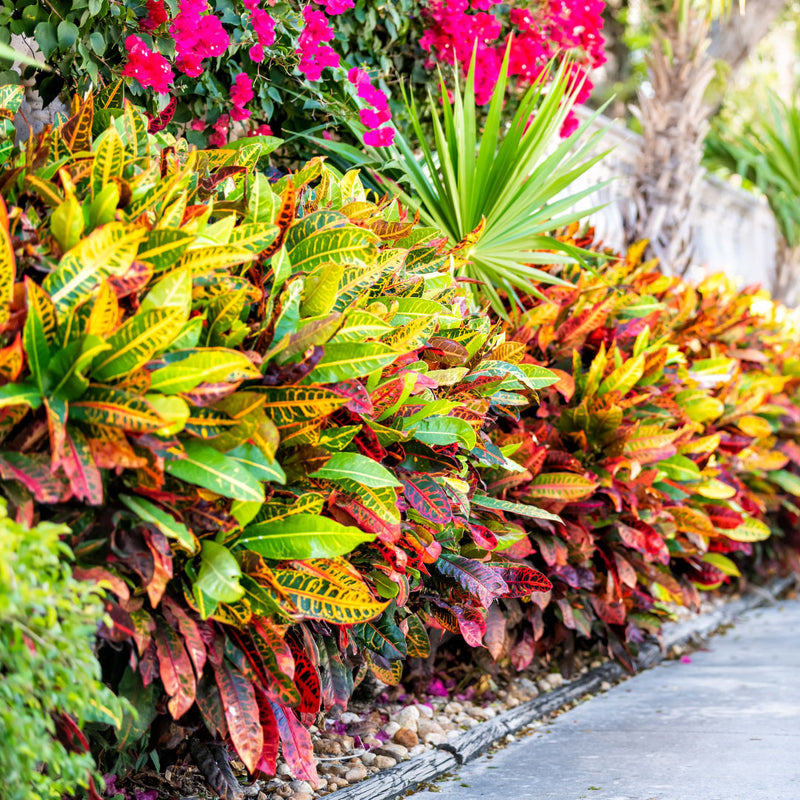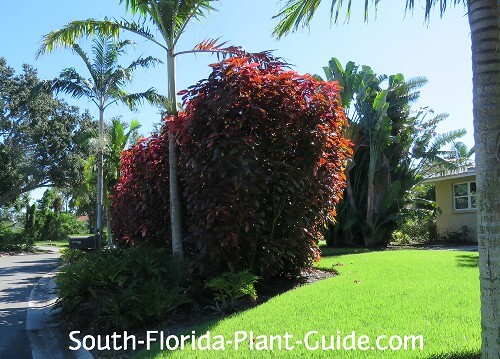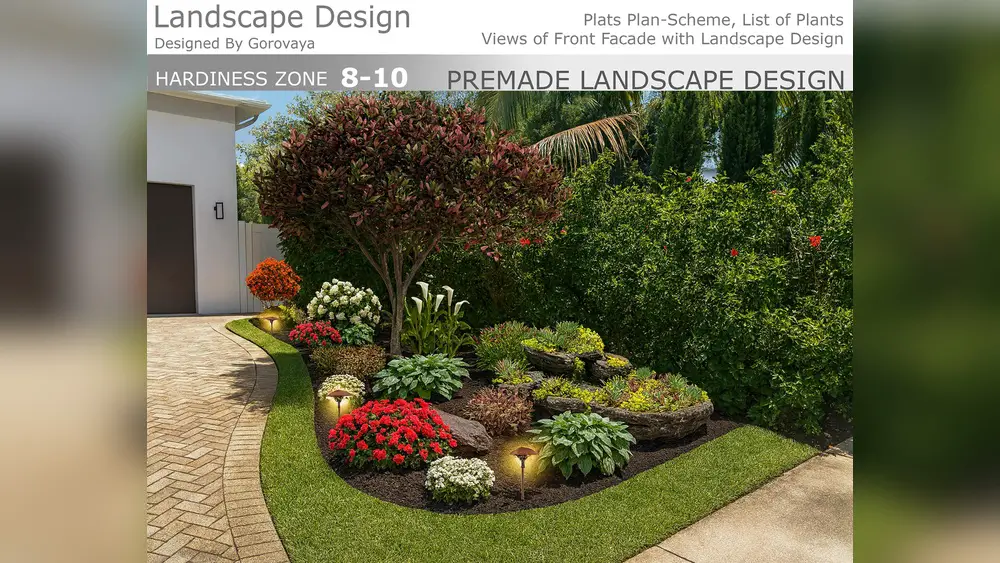If you want your Florida garden to thrive while staying beautiful and easy to care for, choosing the right plants is key. Florida’s unique climate means not every plant will flourish under its sun, heat, and humidity.
But don’t worry—there are plenty of stunning landscaping plants perfectly suited to your yard that can handle the challenges and boost your home’s curb appeal. Whether you’re aiming for vibrant colors, low maintenance, or attracting local wildlife, this guide will help you discover the best landscaping plants for Florida.
Keep reading to transform your outdoor space into a lush, inviting oasis that works with nature, not against it.
Native Florida Plants
Native Florida plants thrive naturally in the state’s unique climate. They require less water and care than non-native species. These plants support local ecosystems and preserve Florida’s natural beauty.
Using native plants in landscaping helps create a sustainable garden. They adapt well to Florida’s sandy soils and heat. Choosing natives also reduces the need for fertilizers and pesticides.
Benefits Of Native Species
Native plants grow well with minimal effort. They save water and resist local pests. These plants improve soil quality and prevent erosion. Their deep roots help manage heavy rains and droughts. Landscaping with natives reduces maintenance and cost. They also protect Florida’s natural environment.
Popular Native Choices
Florida offers many beautiful native plants for gardens. Saw palmetto adds texture and shade. Coontie is a low-growing ground cover. Muhly grass creates pink, airy blooms in fall. Firebush provides bright red flowers that bloom year-round. Simpson’s stopper attracts butterflies and birds. These plants bring color and life to any yard.
Attracting Wildlife With Natives
Native plants provide food and shelter for wildlife. Birds, butterflies, and bees rely on these plants. Planting natives helps support pollinators and local animals. Flowers like milkweed attract monarch butterflies. Fruit-bearing plants feed native birds. Gardens with native plants become lively natural habitats.
Low-maintenance Plants
Low-maintenance plants are perfect for Florida gardens. They save time and water. These plants thrive in Florida’s hot and humid climate. They need little care but look great year-round. Choosing the right plants helps reduce garden chores and keeps your yard beautiful.
Drought-tolerant Varieties
Drought-tolerant plants survive with little water. They handle Florida’s dry spells well. Examples include agave, yucca, and muhly grass. These plants need watering only occasionally. They keep your landscape green and healthy without much effort.
Pest-resistant Options
Pest-resistant plants reduce the need for chemicals. They fight off bugs naturally. Florida-friendly plants like lantana, salvia, and rosemary attract beneficial insects. These plants stay strong and healthy. They keep pests away, saving you time and money.
Perennials For Easy Care
Perennials bloom every year without replanting. They grow back strong after winter. Florida favorites include coreopsis, firebush, and blanket flower. These plants need minimal pruning and watering. They provide lasting color and structure to your garden.
Plants For Full Sun
Plants that thrive in full sun are essential for Florida gardens. The state’s bright, intense sunlight demands strong, sun-loving plants. Choosing the right plants helps your garden stay healthy and vibrant. These plants handle heat and direct sunlight without wilting or fading.
Full sun plants add color, texture, and life to your outdoor space. They suit open areas, patios, and sunny borders. These plants often need less water and care once established, making them perfect for busy gardeners.
Heat-tolerant Flowers
Heat-tolerant flowers bring bright colors to sunny spots. They survive Florida’s hot summers and bloom continuously. Examples include lantana, blanket flower, and gaillardia. These flowers attract butterflies and bees, supporting local wildlife. Their tough nature means less worry about wilting or leaf burn.
Colorful Sun-loving Shrubs
Colorful shrubs add structure and long-lasting beauty. Bougainvillea and hibiscus bloom with vivid colors under the sun. Firebush and oleander are also popular for their hardiness and flower show. These shrubs create privacy and shade while brightening your landscape. Many sun-loving shrubs need little pruning and resist pests well.
Container-friendly Sun Plants
Containers let you grow sun plants anywhere, even on patios or balconies. Succulents like aloe and agave thrive in pots with full sun. Marigolds and petunias also do well in containers, offering splashy colors. Container plants are easy to move, helping you control sunlight and water. They are great for small spaces and flexible garden designs.

Credit: www.epicgardening.com
Plants For Shade And Partial Shade
Shade and partial shade areas in Florida gardens need special plant choices. These plants thrive without full sun and add beauty to darker spaces. Selecting the right species helps create lush, vibrant landscapes even under trees or on north-facing walls. Plants that tolerate low light keep your garden lively and green.
Shade-tolerant Ground Covers
Ground covers for shade protect soil and reduce weeds. They form a green carpet that brightens dim spots. Examples include Asiatic jasmine, mondo grass, and liriope. These plants spread easily and need little care. Their deep green leaves hold up well in Florida’s humid climate.
Ferns And Tropical Foliage
Ferns thrive in shady, moist areas and bring a tropical feel. Boston fern and maidenhair fern are popular choices. Tropical foliage plants like caladium and elephant ear also do well. Their large, colorful leaves create texture and contrast. These plants grow well in filtered sunlight or dappled shade.
Flowering Plants For Low Light
Some flowering plants bloom in low light and add color to shade gardens. Impatiens and begonias are easy to grow and flower often. They brighten shady spots with pink, red, or white blooms. These plants prefer moist soil and protected locations. Choose them to add seasonal color where sun is limited.
Flowering Plants For Year-round Color
Flowering plants add charm and vibrant color to Florida landscapes all year. Choosing the right flowers ensures your garden never looks dull. Plants that bloom in different seasons keep the landscape lively. Evergreen shrubs keep flowers visible even in off-seasons. Annuals fill gaps with continuous blooms throughout the year. Combining these types creates a colorful, inviting outdoor space.
Seasonal Bloomers
Seasonal bloomers offer bright flowers during specific times. In spring, azaleas and camellias burst with color. Summer brings hibiscus and plumeria, perfect for tropical vibes. Fall’s goldenrod and lantana add warm shades. Winter blooms include poinsettias and kalanchoe. Plant a variety to enjoy changing colors all year long.
Evergreen Flowering Shrubs
Evergreen flowering shrubs keep your garden colorful and green. Gardenias produce fragrant white flowers most of the year. Viburnums show clusters of small, pretty blooms. Ixora offers bright red or orange flowers in dense clusters. These shrubs provide structure and color even when other plants rest.
Annuals For Continuous Blooms
Annuals bloom nonstop but last only one season. Marigolds and petunias add cheerful colors from spring to fall. Zinnias attract butterflies with their bright flowers. Plant them in beds or pots for easy color refresh. Replace spent annuals quickly to keep blooms going all year.

Credit: jungleplants.com
Grasses And Ground Covers
Grasses and ground covers are essential for Florida landscapes. They provide texture, color, and help control soil erosion. These plants thrive in Florida’s warm climate and can reduce maintenance needs. Choosing the right grasses and ground covers improves your garden’s health and appearance.
Ornamental Grasses
Ornamental grasses add movement and softness to any garden. They often have slender leaves and feathery flowers that sway with the wind. These grasses tolerate heat and drought well. Popular options include Muhly Grass and Fountain Grass. They attract birds and butterflies, enhancing garden life.
Erosion-control Ground Covers
Erosion-control ground covers stabilize soil on slopes and banks. They spread quickly, forming dense mats that protect soil from rain and wind. Creeping Jenny and Asiatic Jasmine are excellent choices. These plants reduce weeds and keep soil moist. Their roots bind soil, preventing washouts.
Low-growing Spreading Plants
Low-growing spreading plants fill bare spots and reduce weed growth. They create a lush green carpet that requires little mowing. Blue Daze and Dwarf Mondo Grass work well in Florida gardens. These plants tolerate sun and shade and need minimal care. They bring uniform color and texture to landscapes.
Using The Rule Of Three
The rule of three is a simple but powerful tool in Florida landscaping. It means grouping plants or garden elements in sets of three. This method creates a natural and balanced look. It feels more inviting than even-numbered groups.
Using the rule of three helps guide the eye through your garden. It adds depth and interest without making the space look crowded. This technique works well with Florida’s diverse plant life.
Grouping Plants For Impact
Plant three of the same species together to make a strong visual statement. This creates a bold color or texture block. Groupings of three are easy to spot and make your garden look organized.
Mix native Florida plants like saw palmetto, firebush, or coontie in groups of three. This approach fits the local climate and soil perfectly. It also supports local wildlife like butterflies and birds.
Combining Heights And Textures
Use three plants of different heights to add layers to your landscape. For example, place a tall palm, a medium shrub, and a low groundcover together. This mix creates a more dynamic and natural scene.
Vary textures by pairing smooth, spiky, and soft foliage in sets of three. This contrast keeps the garden visually interesting. Florida plants like sawgrass, rosemary, and blue daze work well in these combinations.
Creating Focal Points
Group three striking plants to draw attention to a specific garden area. This could be near a pathway, entrance, or seating spot. The trio acts as a visual anchor and invites visitors to explore.
Choose plants with bright flowers or unique shapes for focal points. Hibiscus, crotons, and bromeliads are excellent choices in Florida gardens. Their colors and forms naturally stand out in groups of three.
Design Tips For Florida Gardens
Designing a garden in Florida requires special care. The climate is warm, humid, and sunny most of the year. Plants must cope with heat and occasional storms. Smart design helps your garden thrive and look good. It balances plants, soil, and hardscape parts. These tips help you create a lasting Florida garden.
Incorporating Hardscaping Elements
Hardscaping adds structure and style to your garden. Use paths, patios, and walls to define spaces. Natural stone or brick suits Florida’s outdoor look. Arrange elements in groups of three for visual interest. This method creates balance and draws the eye. Choose materials that handle heat and rain well. Hardscaping reduces garden upkeep by limiting grass and weeds.
Choosing Mulch And Soil
Mulch helps keep soil moist and cool. Use organic mulch like pine bark or cypress. These break down slowly and improve soil health. Florida soil is often sandy and drains fast. Mix compost to increase nutrients and water retention. Mulch also controls weeds and protects plant roots. Refresh mulch layers yearly to maintain benefits.
Water-efficient Landscaping
Water is scarce in some Florida areas. Use drought-tolerant plants that need less water. Group plants with similar watering needs together. Install drip irrigation to save water and target roots. Mulch helps reduce evaporation from soil. Collect rainwater for garden use with barrels. Water early morning or late evening to reduce loss.

Credit: www.south-florida-plant-guide.com
Frequently Asked Questions
What Is The Best Low-maintenance Landscape In Florida?
The best low-maintenance landscape in Florida uses native plants, drought-tolerant perennials, mulch, ground cover, and hardscaping. These reduce water and care needs while enhancing beauty.
What Is The Rule Of 3 In Landscaping?
The rule of three in landscaping groups elements in sets of three for natural, balanced, and visually appealing designs. It enhances depth, guides the eye, and creates focal points. This approach uses varied heights, colors, and textures to add interest and harmony to outdoor spaces.
What Plants Can Take Full Florida Sun?
Plants like hibiscus, bougainvillea, plumbago, crape myrtle, and firebush thrive in full Florida sun. Choose native species for best results.
What Is The Easiest Plant To Grow In Florida?
The easiest plant to grow in Florida is the Spider Plant. It thrives in heat, requires minimal care, and adapts well to Florida’s climate. Native plants like Firebush and Coontie also grow easily, needing little water and resisting pests naturally.
Conclusion
Choosing the right plants shapes Florida gardens beautifully and easily. Native plants thrive well with little care and save water. Perennials bring lasting color year after year without much fuss. Group plants in threes for a natural, balanced look. Mulch and ground covers help keep soil moist and healthy.
Container gardens add charm and flexibility to any space. With these choices, your Florida landscape stays green and inviting. Simple steps lead to a garden you will enjoy every day. Start planting today for a vibrant outdoor space tomorrow.

